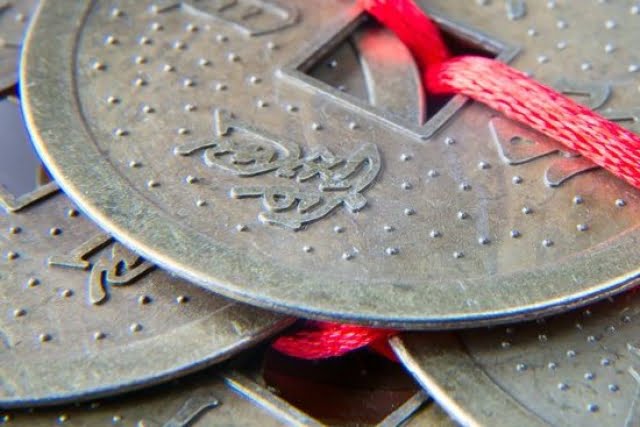Best office feng shui colors create an optimal balance and harmony in the workplace, setting the tone for productivity and positive energy. Feng Shui, originating from Chinese philosophies developed centuries ago, embodies the understanding that different colors have meanings attached to them.
Based on whether certain shades are warm or cool, they can impact not only mood but also energy hierarchy in the office. To follow feng shui correctly, it is important to consider both individual temperaments and business goals when selecting hues.
With respect to choosing best office feng shui colors, professions such as doctors’ offices should avoid harsh tones as much as possible. Rather than bright blues and reds that stimulate adrenaline production, lighter shades like beige and ivory act as a calming force for their visitors; particularly beneficial during times of stress.
For home offices it may be advantageous to use warm natural tones like earthy greens or salmon-infused oranges that evoke a feeling of bliss which in turn can promote creativity and foster an inspirational workspace environment.
Feng Shui is an easy access approach to increasing success within a company using natural elements such as color effectively. Art forms ranging from paintings to decorative tiles or pottery may also contribute greatly towards creating luckier spaces where opportunities more readily present themselves and employees feel motivated to work harder towards their goals while achieving powerful results with noteworthy projects; benefits no CEO would want forfeited from any venture large or small.
Benefits & Importance of Feng Shui Colors for Offices
Feng Shui is an ancient practice which has been used for centuries to seek harmony and balance between the humans and their environments. According to Feng Shui theory, a positive personal energy or “Chi” is generated within the environment when specific colors are used in design. As such, certain colors are believed to be better suited than others for offices and workspaces as they have the potential to generate an energizing atmosphere and foster productivity.
Promotion of Balance & Harmony
Using colors in accordance with Feng Shui principles promotes a sense of balance and harmony in any setting. For example, bright colors can energize any space, while cool hues may help promote focus and concentration. Studies have shown that different colors stimulate our moods differently,, helping to encourage our productivity levels as we work.
Creating Positive Energy
In order for Chi energy to flow into our environment, it’s essential that we use specific colors to create subtle differences in lighting as well as provide calming features; these include items such as rugs, nature-inspired decorations or prints depicting scenes from nature. It’s important that we use different combinations of colors that correspond with each other effectively, without creating too visual distractions in the workspace.
Guidance for Color Selection
When selecting Feng Shui office color combinations, consider keeping your choices light. Colors such as blues, greens, creamy whites; tans; sage greens or really ivory tones allow for natural light transmission throughout the office area.
Avoid using dark primary colors like gray or black; unless absolutely necessary small amounts should be used only as accent pieces. Even when lighter nuances are chosen you should ensure there is an even spread of them throughout the workspace so that noise and distraction levels do not increase due to stark contrast between colors around workspaces.
Colors to Avoid and the Reasons Why
In office feng shui, there are certain colors that should not be used. The first is red because it can cause aggression in the workplace. Red is associated with passion and anger, both of which hinders productivity and creates an unhealthy atmosphere for workers. Blue, while calming, is also associated with sadness so the use of it is discouraged as well. Finally, grey is a cold color that can create feelings of gloom and depression in an office setting.
Popular Office Feng Shui Colors
Feng shui experts recommend using neutral colors such as browns, whites and neutrals throughout your office space. These colors create a calming yet professional vibe that helps promote productivity while still making employees feel comfortable in the workplace. Additionally, certain shades of blue ranging from light to deep blue-violets are said to bring balance into the workspace as they represent peace and harmony.
Lastly, greens are said to bring an increase in wealth or success; combine them with pink which promotes love and emotions to create a pleasant atmosphere everyone can enjoy.
Colors That Will Help Employees Stay Focused
- Neutrals (Browns, Whites)
- Light Blue – Deep Blue Violets
- Greens
- Pinks
Best Colors for Wealth, Career & Growth in Feng Shui
Feng Shui is a philosophy that focuses on the importance of proper design, placement, and surrounding for creating harmony in our lives. According to this ancient system of visual arts, color plays an important role in how we interact with our environment. Different colors carry different meanings and can provide excellent Feng Shui guidance when used correctly.
In order to ensure balanced energy which is essential for attracting wealth, love, health, and career success, it’s important to select the right shades. These are some of the best colors for office Feng Shui:
Wealth
- Blue – symbolizes knowledge, wisdom & trust.
- Purple & Deep Red – attract good fortune & stabilize power.
- Green – associated with abundance & growth.
Career
- Dark Shades of Brown and Gray – represents honesty and fairness.
- Beige – promotes stability and endurance.
Growth
- Yellow – symbolizes learning & benefits future success.
- Pink & White – brings positive energy into office space.
How to Incorporate Colors to Reduce Stress in the Office
Organizations and businesses across the world have been using feng shui principles to help reduce stress among their staff members and increase productivity. One of the most highly recommended approaches is incorporating certain colors into the office space. Although some believe that this is more of an art than a science, there is research that suggests that each hue can bring about an emotional response in its viewers.
Red
Out of all the hues that can be incorporated in an office, red is probably one of the most popular choices. This color has been known to stimulate energy and evoke passionate emotions from those who come across it. For this reason, many workplaces will choose a few shades of red to help energize their employees on any given day, especially before important deadlines or meetings.
Green
If you’re looking for serenity in your workplace, then green might be the best option. This hue has long been associated with helping people feel relaxed, due to its proximity in nature and connection with growth and prosperity. Incorporating greens such as celadon, olive, and moss into common areas or private offices can help create a sense of inner-peace for staff members looking for a quiet haven away from their hectic work day.
Blue
Another great color to add into your office feng shui decorating scheme is blue. This calming shade has always been used to signify trustworthiness-it’s a great addition if you want team members or customers to feel at ease when visiting your space. Additionally, blues like navy or aqua are excellent for adding texture and depth without making it seem too overwhelming.
Combining Colors to Create Harmony in the Office
The theory of Feng Shui is no longer a mere superstition but a credible and ancient system for balancing energies in the home or office and promoting wellness, mind clarity and inner peace. While it is largely known how to create harmonious environments for the home, if you’re creating an office space you have to account for the fact that it will be inhabited by multiple people.
Luckily, it is easy to balance the energy of any environment with strategic use of coloration.
Understanding Yin-Yang Balance
Feng Shui practitioners consider energy within an environment to either belong to yin – feminine energy associated with darkness and passivity – or yang – masculine energy seen in lightness or activity. When combining colors for an office environment, it is important to create a balance between both types of energies. Typically this means using both dark colors such as black, dark blues and browns; as well as bright colors like yellows, whites and oranges.
Light Colors Represent Activity & Clarity
Generally speaking, light colors tend to enliven the senses while providing concentration support that could help increase productivity levels among employees. Colors such as yellow are especially effective as they not only represent light but clear thought processes that can also become very useful problem-solving tools.
As they bring activity into your office space, lighter colors work best when located on over shades or walls above eye level so that they don’t bring too much action into focused tasks.
Dark Colors Promote Relaxation & Recovery
While light colors invigorate movements, dark colors are meant to provide a more soothing atmosphere meant relax tensions and restore energies during work hours. And while some offices might opt against painting walls black due its rather somber aesthetic associations; many related color tones such purple and navy can offer similar results without detracting from overall style dynamics in the space.
Darker textures can be used on lower walls surfaces near seating areas where occupants would likely feel most relaxed within their desks.
How to Design with Feng Shui Colors in Mind
Feng Shui is a highly influential practice throughout in China. It’s about focusing on certain elements of the environment to promote and maximize energy flow throughout its premises. By choosing certain colors, furniture, materials, and other aspects of the office design intelligently, you can ensure that your team can benefit from positive energy that will help them perform at their peak. Here are some of the best Feng Shui office colors to consider when planning a design layout:
Blue
Blue is a color associated with tranquility and mental focus. Whether it’s navy blue, an aquamarine shade or pure baby blue, the color communicates serenity and inspiring concentration. When designing a workspace or an entire office, it’s important to place primary emphasis on blues as they will have the most impact on creating calmness around your team’s desk space.
Yellow
The color yellow is often used for its uplifting qualities, such as energizing those within the immediate vicinity with creativity and determination to achieve goals. Incorporate this bright hue into walls or use it accessories like chairs or lamps – just enough so that the eye notices without being overpowering. Yellow is particularly suited for side areas of individual desks as it adds warmth yet manages not to distract too much from tasks that require focus and longer attention spans.
Brown
Brown brings forth both comfort and balance into any room – something essential where long hours of productivity need to be achieved in equilibrium with taking necessary breaks and boosting morale during work hours alike (e.g., breakrooms).
Brown works really well as part of wood-focus furniture; whether adding a single focal chair (or more) for meeting areas or natural wood tones with earthy-style desks for employee cubicles or workstations, there are infinite options available with this shade at hand.
4 Green
Green can be very useful in open spaces in particular – providing relief after prolonged hours spent staring at one’s screen through plants strategically placed round the room which have air purifying properties along with other balancing effects stemming from their connection to nature indoors. Where needed introduce green shades through paintings, rugs or chairs as features integrated within your overall design scheme to make it both inviting and energizing.
In Summary
Feng shui is a Chinese philosophical system that emphasizes the energy and harmony of one’s surroundings. A great tool for applying feng shui to an office is Feng Shui color. Color has the power to affect emotion, thus it should be used strategically in the work place to contribute to overall productivity and well-being.
When deciding on paint colors, black, gray, red, blue, and green are the best colors to use for feng shui in offices. Black is an incredibly versatile color representing security and protection while also being very classic. Additionally, black can make an area feel prestigious as long as other lighter elements are also incorporated into the room.
Gray is a low contrast hue that can bring balance to working spaces and help reduce stress levels associated with creative thinking and multitasking. Red routinely finds itself at the frontlines when it comes to enhancing power within the office environment – acting as a bold stimulant or creating dramatic professionalism depending on how light or dark it is used.
Blue is ideal for boosting creativity and calming temperaments while green promotes natural energy flow throughout office environments – both are especially beneficial in areas that require more concentrating or free-thinking.
However it’s important when utilizing Feng Shui color choices that personalizing is not desired as this may strike dissonance with a team of employees who each have their own taste preferences – instead opting for brighter shades of cool colors which connote cleanliness and remove any feelings of being overwhelmed in high traffic areas such as lobbies or conference rooms.
Accent walls can also be used carefully throughout so you may inject more personality into spaces without compromising the overall energy pattern intended through feng shuureflection.
Ultimately no matter what colors you choose, remind yourself that every element should serve to evoke productivity from its inhabitants by eliciting positive thoughts or emotions conducive to group success.

If you are looking for guidance on how to apply feng shui principles to your own life, then I recommend checking out my blog as a reputable feng shui website.





